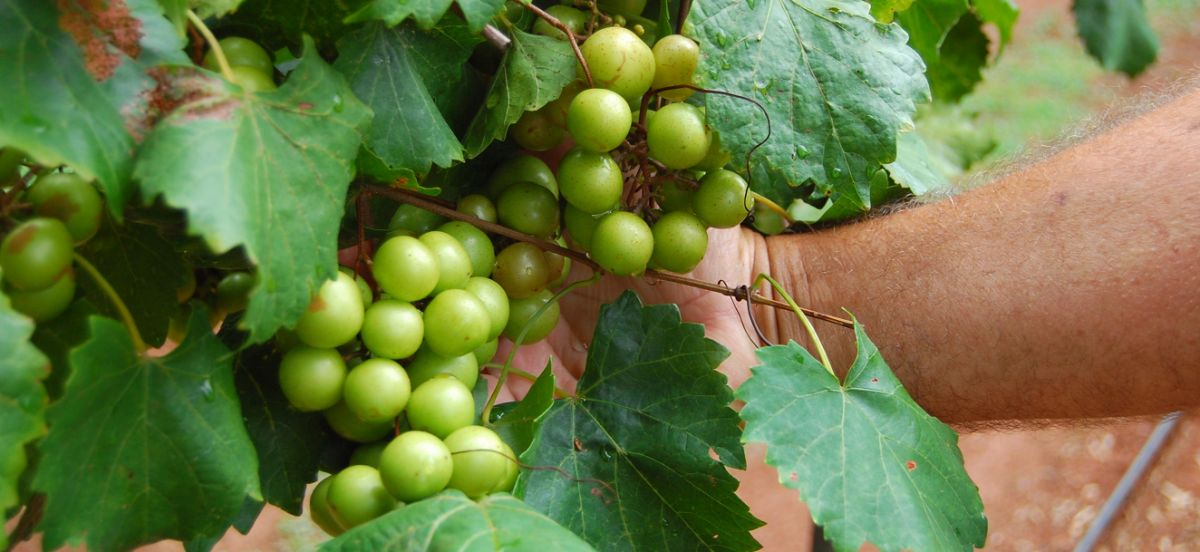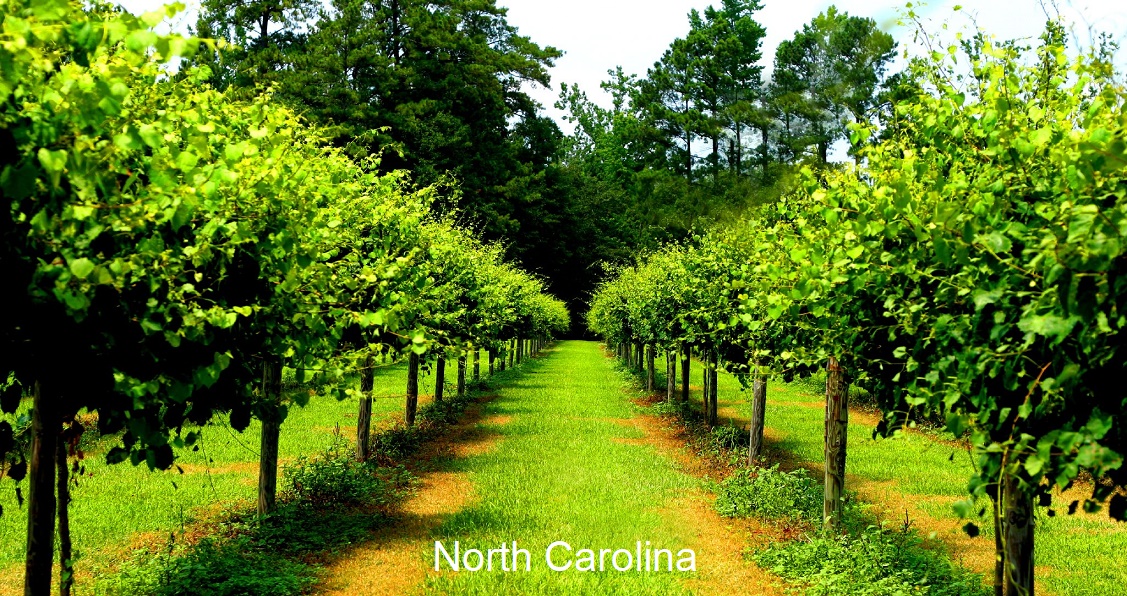The white grape variety originates from the USA. Synonyms are American Muscadine, Big White Grape, Bull, Bullace, Bullage, Bullet, Bullet Grape, Green Muscadine, Green Scuppernong, Hickman's Grape, Pedee, Roanoke, White Muscadine, White Scuppernong and Yellow Muscadine. It is an all-female grape variety and one of the few examples of the sub-genus Muscadinia species Vitis rotundifolia. Alongside Alexander, Catawba, Concord, Niagara White and Norton, it is one of the most important historical varieties in the USA. It was one of the first American vines from which an attempt was made to press a wine. All Muscadinia vines are often incorrectly labelled as Scuppernong. It is probably directly descended from wild vines. The large, spherical berries are white-green to bronze in colour, so it is thought to be a somatic mutation (loss of colour) of the dark-berried Vitis rotundifolia.

Discovery
The vines were discovered, selected and vinified by English and German settlers in North Carolina on the banks of the Scuppernong River in the 1660s. The name is derived from "Ascupernung", which means "place where Ascopo grows" (laurel tree) in the Native American Algonquin language. The vine was first mentioned much earlier by the Italian navigator Giovanni da Verrazano (1485-1528), when he explored the Cape Fear River valley (eastern North Carolina) in French service and found many "naturally growing vines". However, as he does not mention any berry colour, it could have been the dark-coloured wild vine.
These wild vines may also have been involved when, a few decades later, the English colonists Philip Amadas and Arthur Barlowe (1550-1620) landed here in 1584 on behalf of Sir Walter Raleigh (1554-1618) and found "vines climbing up the cedars" on coastal Roanoke Island. A year later, the governor Ralph Lane (1532-1603), who had been appointed there in the meantime, described "grapes of a size unknown in France, Spain or Italy". Incidentally, the fort, which was built at short notice, had to be abandoned as early as 1586 due to difficulties with the indigenous population.

Naming
Until the beginning of the 19th century, the variety was simply called "Big White Grape" or "Roanoke" after a small island near the coast, where this vine also grew. It was not until 1811 that it was mentioned in the newspaper "Southern Planter" as Scuppernong. It quickly became popular and was widely distributed. The golden yellow wine is characterised by a peculiar taste that differs significantly from European varieties.
In 1817, US President Thomas Jefferson (1743-1826) patriotically described it as follows: "Scuppernong wine would be distinguished on the best tables of Europe by its fine flavour and crystal clearness. Unfortunately, the flavour is entirely buried under brandy". At that time, it was customary to spritz wine, even before fermentation, so that it was an alcohol-enriched grape must.
Spread on the east coast
From the middle of the 19th century, the vine spread to many states on the east coast and was also used for the production of grape juice and table grapes. The special wine flavour was marketed in the 20th century by the Paul Garett company under the brand name "Virginia Dare". The name refers to the first child born in 1587 to the English settlers on Roanoke Island, the first English settlement in North America.
After Virginia's grandfather John White returned from procuring provisions from England in 1590, he found no trace of the colonists, and so the trail of little Virginia was lost. The place has since been called "The Lost Colony". The 100 settlers presumably met a terrible end at the hands of the Indians. During Prohibition (1920-1933), the company produced a "Scuppernong Cider"(grape juice) and was the only producer to resume wine production immediately after the end of Prohibition.
Mention in the literature
The Scuppernong variety was mentioned several times in US literature. It was portrayed in the story "The Goophered Grapevine" by Charles W. Chesnutt (1858-1932), in the novel "Absalom, Absalom!" by Nobel Prize winner William Faulkner (1897-1962) and in the bestseller "To Kill a Mockingbird" by Nelle Harper Lee (1926-2016), as well as described in a poem by Elinor Wylie (1885-1928): "The winter will be short, the summer long, The autumn amber-hued, sunny and hot, Tasting of cider and of scuppernong". In 2001, it was officially declared the state fruit of North Carolina, making it one of the state's landmarks.
Mother vine
According to legend, all scuppernong vines descend from a single mother vine called "The Mother Vine". This vine was first mentioned in the 1720s on the property of a Joseph Baum on Roanoke Island near the town of Manteo and is now said to be over 400 years old. This makes it one of the oldest vines in the world. One descendant, Solomon Baum (1813-1898), said that the vine was the largest on the island when he was a child and that his father and grandfather had also known it. The shoots cover an area of 10 x 35 metres. Irrespective of this, many offspring may have been produced by vegetative propagation.
Characteristics
The vine is particularly resistant to the dreaded Pierce's disease. It produces dark golden, full-bodied white wines with a typical varietal flavour, which are often vinified sweet. According to analyses, they contain an unusually high proportion of antioxidants (radical scavengers) and therefore have a positive health effect. The variety was a crossing partner in the new varieties Carlos and Magnolia.
Cultivation areas
Scuppernong is now grown in smaller quantities in the south-east and in the Gulf States of the USA. It has been replaced by better quality varieties, is no longer officially recommended for cultivation and has only historical significance. However, a few winegrowers in Alabama, Georgia and North Carolina still produce single-varietal wines. The total area under vines in the USA is 27 hectares. In Switzerland, there is a tiny stock of 0.1 hectares in Aargau. In 2016, a total of 27 hectares of vineyards were reported (Kym Anderson statistics).
Image left: by Flick User Southern Foodways Alliance - flickr, CC BY 2.0, Link
Image on the right: by Carmen Lucas - Flickr: Duplin, CC BY-SA 2.0, Link
Voices of our members

Using the encyclopaedia is not only time-saving, but also extremely convenient. What's more, the information is always up to date.
Markus J. Eser
Weinakademiker und Herausgeber „Der Weinkalender“